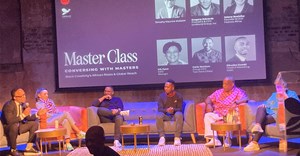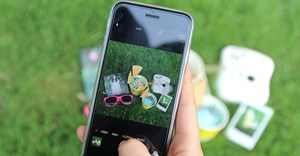Trending



 Does anyone know what content is any more?Justine Drake
Does anyone know what content is any more?Justine Drake

Elections 2024
Jobs
- Marketing Channel Manager George
- Digital Marketing Manager Cape Town
- Mid-Level Visual Designer Cape Town
- Accounts/Inventory Clerk Johannesburg
- Junior Graphic Designer Umhlanga
- Printing Sales Account Executive Johannesburg
- Sales Manager Johannesburg
- Mid/Senior Graphic Designer Kloof
- Coordinator - Marketing and Communications Johannesburg
- Social Media Content Creator West Rand
Influencer marketing is not only about popping champagne bottles

“The reality is that no matter your business, no matter your industry, and no matter your target audience, influencer marketing can be an invaluable tool in your marketing mix, and a must when it comes to the pursuit of success,” he says.
Groenewald says influencer marketing is not only about popping champagne bottles or jumping from one brand to the next.
“As with most marketing, there are certainly cases where a campaign is poorly brainstormed and implemented because of a lack of insight and expertise on how to capitalise on the influencer marketing channel. However, for every case where the results may leave much to be desired, there are many more examples that meet – and exceed – the envisioned objectives,” says Groenewald.
Building brand awareness for a medical aid
“With more than 54 years in the game, a local medical aid was looking for a new avenue to spread the word about the benefits of its schemes, while increasing leads. Such a challenge is nothing new because no matter how long a business has been around, there’s always a need to raise awareness and drive conversions consistently,” says Groenewald.
It was decided that one of the best ways to achieve this objective was to turn the medical aid’s own members into influencers, tasking them with the creation of content that spread the word about their scheme’s unique selling points, talking to friends, family, and followers about how it benefits their situations and their lives.
In addition to this, micro-influencers from a database were employed to ensure a greater organic reach beyond the existing base who already had their own reasons to believe. The campaign content was relatable and shared to Instagram, Facebook, and Twitter, by 45 nano-influencers and 11 micro-influencers, who posted 504 user-generated content pieces between them over a 10-month period.
And as for the results? Those speak for themselves. Link clicks to the website exceeded the target by 2.8x more, while the number of leads generated came in at two times higher than expected. With regards to the cost-per-lead, this goal was also improved by 3.3x more than expected.
Impressions and engagement for pharmaceutical products
When it comes to marketing pharmaceutical products, there are many strategies, but there are few that generate as much success as a recommendation from a trusted friend or person of influence. And in this regard, an influencer marketing campaign more than delivered.
“The pharmaceutical product in question wanted to find a way to educate potential consumers about its benefits particular to the food-filled periods of celebration, such as long weekends and public holidays. Our proposal for the influencer campaign saw the deployment of existing consumers as nano-influencers to create food-focussed content with friends and family that would help to demonstrate the benefits of the product. An additional collection of micro-influencers was added to the mix to ensure the campaign achieved a larger organic reach,” says Groenewald.
When it came to the results, seven million impressions were reported, with the relatable user-generated content clocking 122 000+ engagements across Facebook, Instagram, Twitter and TikTok.
The pool of influencers consisted of 82 nano-influencers and nine micro-influencers who generated a total of 138 content pieces for the brand to leverage on their own social media channels.
Inspiring excitement and web traffic for travel companies
There are many sources of travel-related content on social media, from ad campaigns to paid media and everything in between. A travel business decided to try something new to create excitement, while driving web traffic to the site which held an array of holiday packages to visit selected areas of South Africa.
“This influencer campaign differed from the usual where celebrities and known personalities jet off to places that few can follow. It utilised everyday people who love leisure and travel, inspiring them to post pictures from their previous holidays, while they shared their excitement at being able to travel and go on holiday again. Each piece of user-generated content also included a link that drove interested individuals to the website to find out more,” says Groenewald.
In the measurement of the objective vs. what was achieved across the 10 nano-influencers and 19 pieces of user-generated content, by the end of the campaign, every objective was well and truly exceeded! The campaign delivered 5x the number of impressions expected, while the number of clicks through to the website came in at 3.5.x higher than estimated.
These days, the big questions with influencer marketing are no longer if or why, but how and when.














